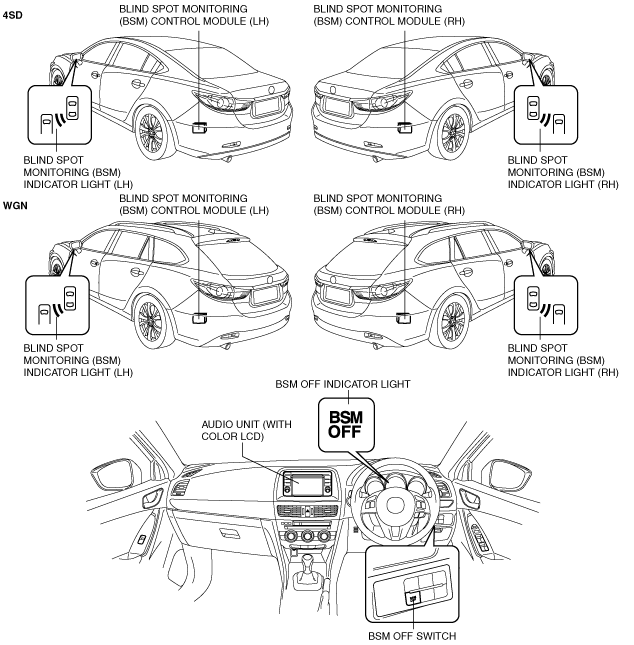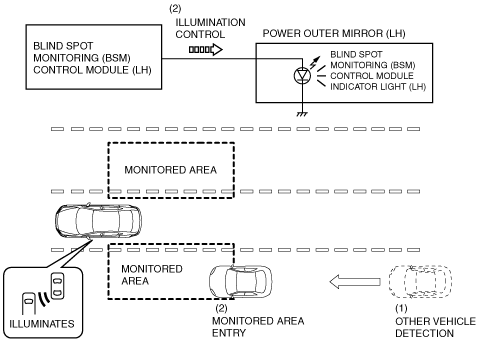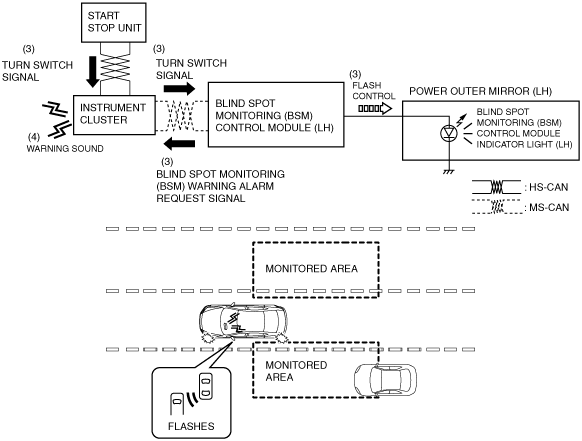• Because the BSM system has various restrictions in the operation, the BSM indicator light might not illuminate or it may be delayed even if there is a vehicle traveling around the vehicle.
• Perform radar test for the BSM control module if the rear bumper has received an impact.
• The BSM system may not operate normally under the following conditions:
-
― Dirt, ice or snow is adhering to the rear bumper surface.
― The vehicle is driven in heavy rain or snowfall, or under conditions where water on the road is sprayed by the vehicle.
― The vehicle is towing a trailer.
― The vehicle accelerates from a standing-start with a target vehicle alongside.
― A target vehicle moves laterally from a lane two lanes over to the adjacent lane.
― The difference in vehicle speed between the vehicle and a target vehicle is higher with the target vehicle passing through the detection area in a very short period.
― On a steep incline, or if there is a difference in height between lanes.
• The BSM control module may not detect all types of vehicles. In particular, detection of the following types of vehicles may not occur:
-
― A vehicle driving at a low speed
― Small vehicles such as motorcycles
― Vehicles with body shapes that may not reflect radar such as unloaded trailers
― Vehicles with low vehicle height
― The difference in vehicle speed between the vehicle and a target vehicle is extremely high.
― A target vehicle accelerates suddenly from the rear of the vehicle and changes to the adjacent lane.
― A target vehicle is traveling in the vehicle's blind spot at nearly the same speed for long periods
• The BSM indicator light may be difficult to view under the following conditions:
-
― Sunlight at sunrise and sunset is reflected in and around the BSM indicator light
― A lighting device with strong illumination is used in the vehicle
• On a road with a narrower lane width, the system could detect vehicles on a lane next to the adjacent lane and cause the warning light and beep to operate. (Conversely, on a road with a wider lane width, the system may not detect vehicles on the adjacent lane and may not operate the warning light/beep.)






